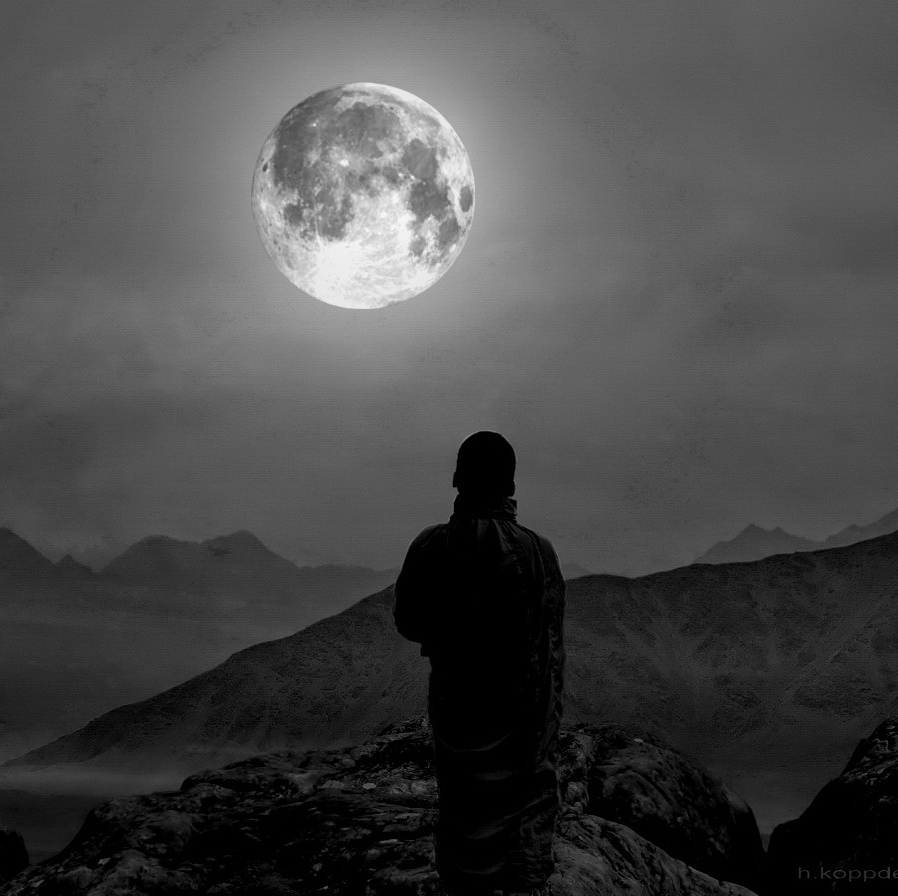
While I do not identify solely as a Buddhist, a Christian, a Muslim, a Jew nor a Pagan, I do enjoy knowing how different religions honour their deities and gods—and I love getting in on any good, fun-loving celebration, especially one that focuses on the ending of suffering and ignorance!
Vesak happens to be one of these occurrences and a day that many Buddhists celebrate as the birth of Buddha alongside the first full moon in May.
This to me is an interesting combination. In Buddhist doctrine, the full moon is important as it is the date that most of the significant events in the life of Buddha occurred.
May’s full moon is extra special, as it is considered by many mystics to be the most powerful full moon of the year. The sun is in Taurus and the moon is in either Scorpio or Sagittarius (this year Sagittarius). It is legend that this lunar/solar combination is the time that the Buddha returns to earth to support us in our regeneration of planet and self.
Most Buddhist lineages celebrate Vesak, although there is some variation in the date and the naming of the day such as calling it Wesak or Buddha day. It has also become a recognized UN holiday to commemorate the contribution that this approximately 2500-year-old religion has given to the world. Vesak is universally acknowledged as a day to honour three pertinent dates to Buddhists: The birth of Siddhartha Gautama (later named Buddha), his enlightenment and then finally his passing from this earth.
If you are unfamiliar with the lore around these dates, let me fill you in on a little of the background information I have discovered on the individual many now simply call, Buddha.
- This man was not born holding the title of Buddha, in fact, ‘’The Buddha” is not a personal name but a title, and can be translated as “the Enlightened One” or “the One Who Knows.”
- He was born to a king and queen in current day Nepal and named Siddhartha by his father, King Shuddhodana. Siddhartha means “he who achieves his aim.”
- He was said to have been birthed by Queen Mayadevi in the middle of her journey to her family home in India.
- It was under a full moon in the district of Kapilavastu, among the Nepalese foothills, in a serene garden under a tree, that the baby Siddhartha was fabled to be born.
- The date of his birth is much debated but said to be close to 623 B.C.
- Growing up, Siddhartha lived a life of leisure in a wealthy, royal home. It was only as he became an adult, married and had a child that he began to question the reason for his existence and notice the suffering that was rampant in the world.
- Many legends state that what began Siddhartha on his path as a holy man was when leaving his royal compound one day, he came upon an old man, a sick man and a corpse. These three sights led him to a realization of human mortality, suffering and disease.
- After seeing these sights, Siddhartha renounced his royal status, took the simple robes of a peasant and began a pilgrimage to enlightenment—finding the ending to suffering.
- Siddhartha’s renunciation is touted as occurring during a full moon.
- After years of study and travel with spiritual teachers, one night Siddhartha decided to meet what he saw as his final challenge—the mythical Mara—the demon of desire that was in his own mind.
- He sat in meditation under a Bodhi tree and for that whole night challenged this demon face-to-face. It was in the morning after having withstood all the assaults Mara and having seen through this suffering, he reached enlightenment. It was then that he received the title, Buddha.
- This significant night of Buddha-hood, also occurred under a full moon’s glow.
- While many stories contradict each other, most hold fast that it wasn’t until the age of 80 that the Buddha left his earthly body. Some say he was poisoned, others state that he chose ‘Parinirvana, or the final deathless state, and abandoned his earthly body’ willingly. All of the accounts that I could find say that he passed away under a full moon.
Because Vesak is a dedication to Buddha, it is said to be a day to practice acts of devotion and rededication to this individual who was responsible for the birthing of the Buddhist religion and to many, a way of life.
Some of the common ways to celebrate Vesak are to spend the day in meditation, practice chanting and give offerings to Buddha. Many traditions also release insects and caged birds to represent the achievement of enlightenment and the end of suffering.
One of my favourite rituals for this day is the “Bathing of Buddha.” In this practice, it is traditional to bathe a statue or picture of the young Buddha in which his right forefinger is pointed towards the sky and left forefinger towards the earth. This bath is done reverently, usually with scented and blessed water to show respect for the great undertaking that Buddha inspired in his followers, to achieve the greatest level of peace in oneself that is possible.
It is my belief that by learning more about each other, our unique practices and our celebrations, we may find greater compassion and love for our fellow humans and this earth.
Whatever our belief system, I hope that this night, as we stare up at the full moon, we are reminded that each of us has a consciousness that is unfolding and that it is worth celebrating, each and every day.
Happy Vesak Day, full moon and birthday, Buddha!
~
Author: Sarah Norrad
Editor: Sarah Kolkka
Image: Hartwig HKD/Flickr






Read 0 comments and reply